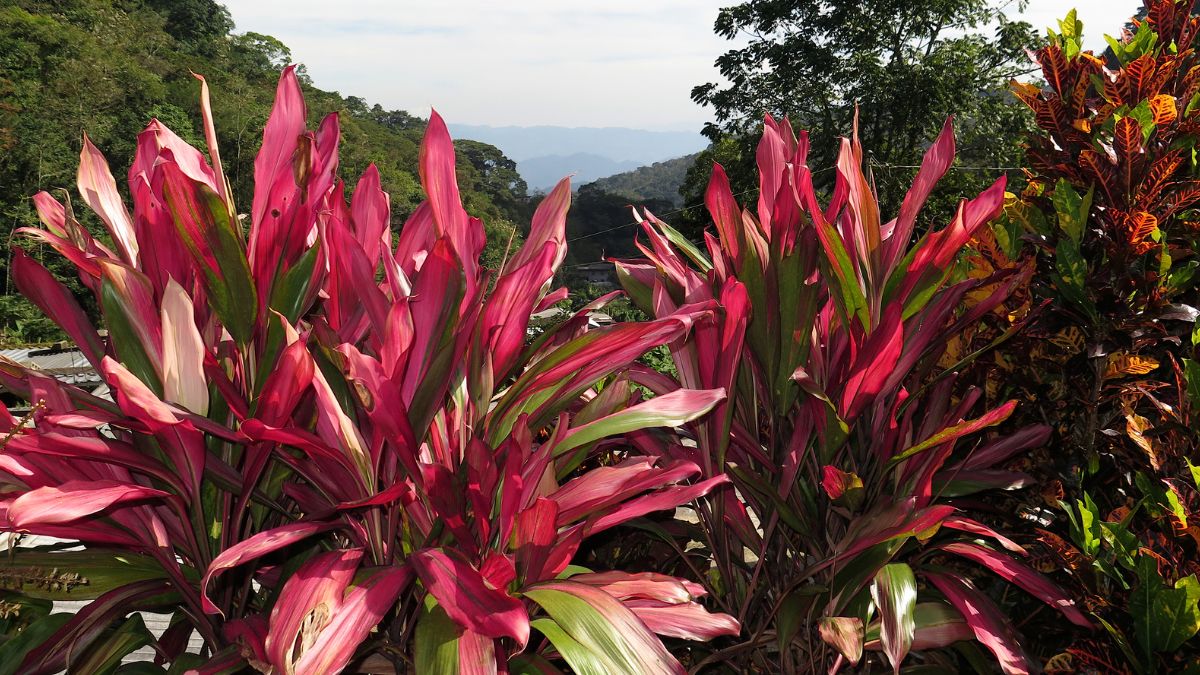Where did Kiwifruit originate from?
The Kiwifruit (Actinidia) belongs to the family of the ray pimples (Actinidiaceae). Although the fruits are mostly imported from New Zealand, they formerly come from China. This is also where its actual name comes from “Chinese gooseberry.”
The name “Kiwi,” which is reminiscent of the heraldic animal of New Zealand, the small bird, was created for marketing purposes. Thus the Kiwi has been known in our country for 30 years, and since then, Kiwifruit is one of the most known exotic fruits.
The genus Kiwi includes various species, but most of them are simply called Kiwi. The most widespread are the large hairy kiwis (Actinidia deliciosa), the somewhat lower-acid, smooth-skinned Actinidia chinensis with yellow flesh and the kiwi berries which are also known as mini-kiwis (Actinidia arguta).
You might also like that: 18 Tips on gardening in June
For over 1,000 years in Asia, all those types of Kiwis have been cultivated – can not be less than that – because of their long shoots, which were used for paper production. The fruit, which requires warmth and is sensitive to frost, can also be cultivated here.
Still, the cultivation of the large-fruited kiwis is only recommended in wine-growing regions for kiwi wine and locations with mild winters and rainy summers.
Appearance and growth
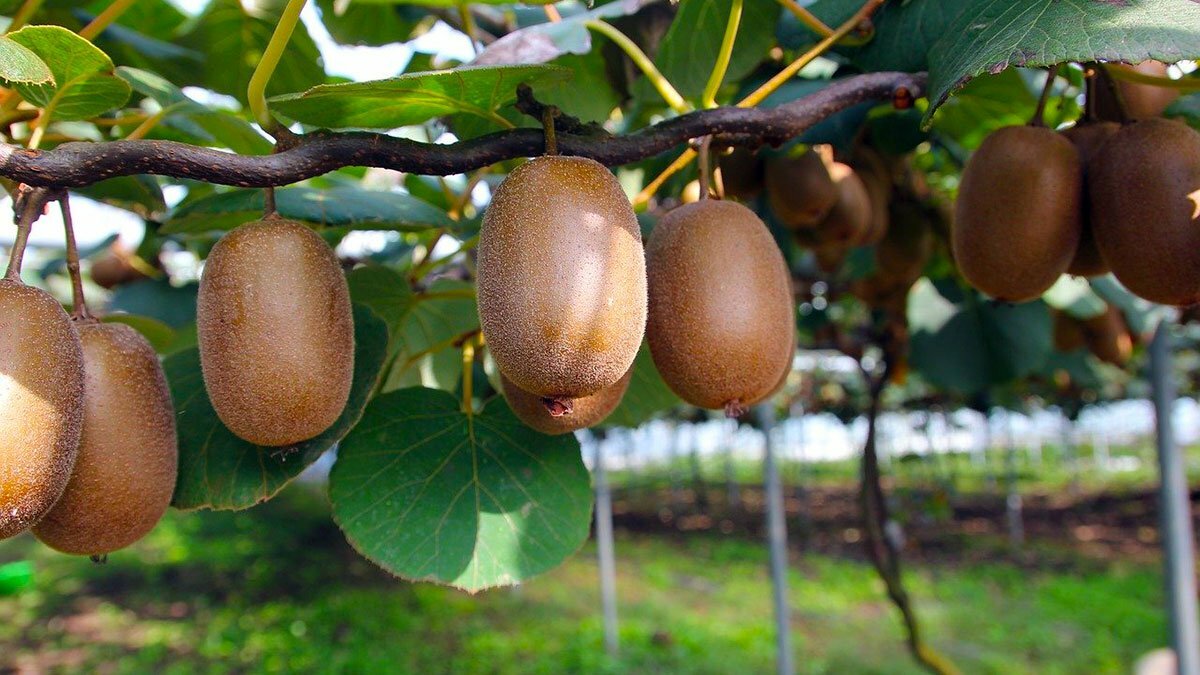
Kiwis are perennial, liana-like growing, deciduous creeping plants. With their extensive wheel shape, the flowers of the Kiwi plant appear from June to July. Its flowers hold snow-white and later yellowish petals with many golden-yellow stamens.
Except for a few new varieties, the plants are dioecious; through this, they bear either purely male or purely female flowers.
By the shape of the flowers, you can distinguish male from female flowers: Male flowers are characterized by numerous stamens and small pistils. In contrast, female flowers appear in small numbers per inflorescence and have radiating white pistils surrounded by a ring of stamens.
The Kiwifruits develop only from female flowers. Depending on the variety, they are large and cylindrical berries covered by densely hairy brown skin. There are many intergrown seed containers inside the fruit. They are formed with black seeds along the central axis.
The flesh of the kiwi fruit is green and pretty soft. Especially when the fruit is fully ripe, it tastes sourish and aromatic. Kiwis have a high vitamin C content. Since the plant’s twine is like lianas in height and width, they need a climbing aid along which they can grow.
Location and soil
Kiwis have a low frost resistance, and the sprouting is very sensitive to a late frost. Even in warm regions or wine-growing areas, kiwis, therefore, thrive best in a place with wind protection. The environment must be warm and bright but not full of direct sun.
In locations outside fruit and wine-growing areas, place the kiwi plants against a southwest wall or on the west side of the house. In this way, you can delay budding in spring until the danger of late frost has passed. A loose, nutrient- and humus-rich soil with a pH value in the slightly acidic range is best suited.
You might also like that: 6 Medicinal plants for insect stings
The Kiwifruit does not tolerate chalky soils very well. If necessary, some rhododendron earth can be added to the soil. Soil should be improved with proper compost in advance if it’s too weak. Kiwi plants can also be grown in large plant pots on the terrace.
Here you can see a Golden Kiwifruit Farm located in New Zealand. One of the many kiwi farms in that country
Planting Kiwi
Since kiwi plants grown from seeds do not flower until six to ten years after planting, it might also be a better idea to buy young plants from specialist shops. These were usually propagated by cuttings and thus flower after only two to four years.
The Kiwifruit tree is susceptible to late frost – the ideal planting period is, therefore, from mid-May to August. As kiwis are dioecious, they should always plant male and female plants to ensure fertilization. The most appropriate planting distance is three to four meters.
It is advisable to work as much leaf or bark compost as possible into the soil as preparation and water the young plants well afterward. It is also advisable to apply a layer of mulch to the soil immediately after planting. This ensures that the soil does not dry out quickly and does not heat up quickly in dry periods.
For the tendrils of the kiwifruit plants, which can grow up to ten meters long, a stable climbing frame, like a pergola or trellis (see “Upbringing and pruning”), is necessary.
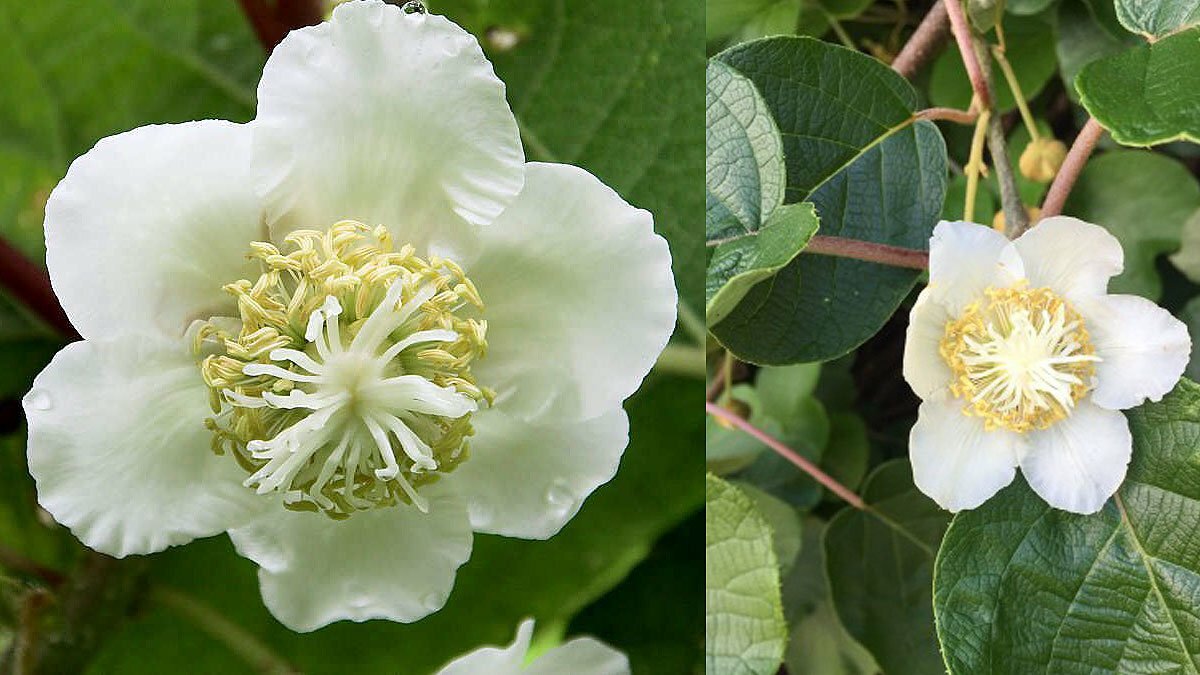
Care tips for Kiwi plant
For the fruits to ripen and develop their aromatic and sour sweetness, kiwis must be watered regularly, especially in hot summers. You do not need to fertilize young plants. Older plants can be provided with horn meal or mineral fertilizer in August and spring.
During the first few years of planting Kiwi trees, you should also cover the stems and root area of the plants with brushwood in winter. If you keep kiwis in a pot, a sufficient supply of water and nutrients is essential. You should also regularly trim shoots that are too long.
Raising and pruning
Since the Kiwi tree develops long shoots, the plant needs a stable climbing frame. A trellis framework with two to three horizontally tensioned wires is recommended.
If the plants are pulled against the house wall, you can erect this simple scaffold directly in front of it and tie the shoots to it. The lowest wire should be about 80 centimeters high; the next ones should be stretched at 50-centimeter intervals.
Also suitable as scaffolding are arbors or pergolas to which the side shoots of the kiwi plants are attached. You should pull one main shoot vertically from the trunk to the top wire in the first few years.
Two strong sidearms might then be pulled horizontally to the left and right from this main shoot, and the fruit-bearing branches are placed over the wires.

The liana-like growing plants thus become wider in years over the trellis or the pergola, and they offer a pleasant sight. Another advantage of that large-fruited kiwis is that they can hang there for a long time in autumn.
Pruning the Kiwifruit is necessary from around the third year of growth. You can shorten the annual shoots to about a third, leaving about 7-8 leaves in August. You can also shorten the ends of the leading shoots once a year. Cut back more in late summer, as the plants bleed heavily in spring.
Fertilization of Kiwi
Most kiwi varieties are dioecious. This means that each plant bears either only female or only male flowers. Therefore, at least one male and one female kiwi plant are required for fertilization. One male plant can fertilize up to seven female plants if the planting distance is not too far apart (preferably not more than four meters).
There are now also a few other monoecious kiwi varieties that bear male and female flowers on one plant. Theoretically, they can do without a pollinator variety. However, practice shows that even with these varieties, the fruit set is much higher if two plants are placed next to each other.
If bees, bumblebees, and other insects are absent at the flowering time, pollination should be done by the plant itself. You should carefully stroke the stamens of a male flower over the ray-shaped white pen in the middle of the female flowers to do this.
Harvesting and utilization
Kiwifruits contain a lot of vitamin C and are rich in calcium, iron, potassium, and other minerals, as well as vitamin B1 and E. The fruits are also rich in fiber and low in calories. The kiwi harvest takes place from the end of September until October.
Since they often do not ripen completely in cooler locations on the plant, the fruits can be left to ripen on the windowsill in the house.
Unfortunately, kiwis that are ripe for harvesting do not keep for too long. However, you can store them quite well in a humid room at a temperature of 53 degrees Fahrenheit.
You can eat them fresh with full vitamins, Squize, and drink kiwi juice, but you can also make jams or jellies. Besides, you can boil and fill them into bowls or use them for cakes, such as green tea cakes with Kiwifruit.
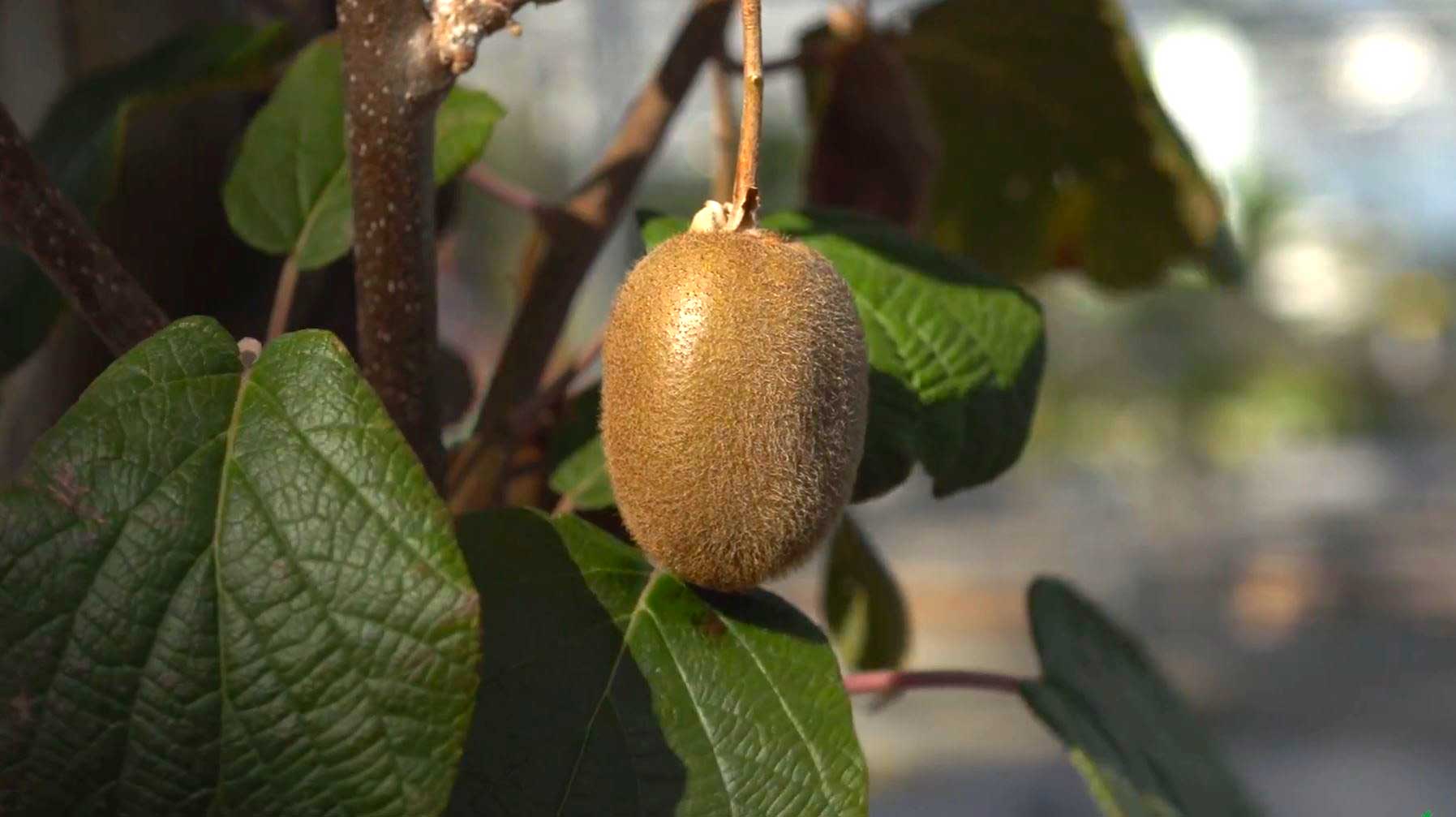
Hibernation
Most kiwi varieties are hardy, but for young, freshly planted seedlings, winter protection is always advisable in the first winter. A warming ground cover of bark mulch and fir brushwood as wind and sun protection for the shoots is ideal.
If kiwifruit plants are cultivated in a tub, they should be placed in a cool, bright location in the house during the winter because of their frost-sensitive roots.
The plant is brought outdoors again when the shoots start to sprout in March. It can tolerate brief sub-zero temperatures there, even without frost protection.
Tips on varieties
Hayward is a proven variety with large, hairy fruits. Its kiwis can grow up to seven centimeters long and weigh around 100 grams.
You should harvest them after the first light frosts at the latest. The plants bear fruit from around the fourth year and need a pollinator because they are dioecious. The male variety ‘Atlas’ is suitable for this.
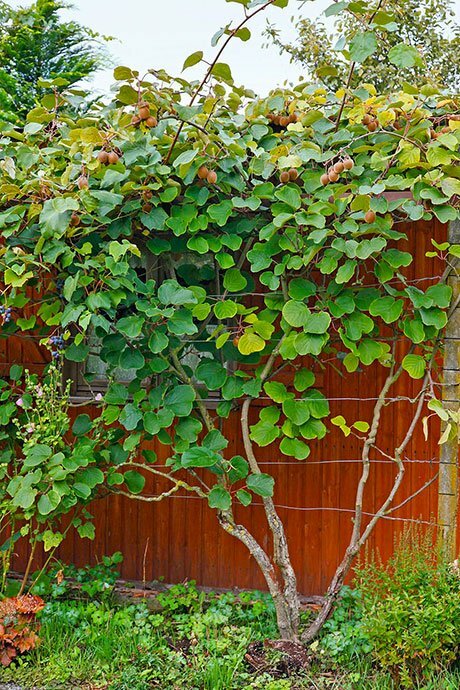
Equally popular ones are ‘Bruno’ with narrow and cylindrical fruits and ‘Monty.’ Abbott grows vigorously, flowers early, and is an all-female variety. From the end of October, its cylindrical, medium-sized fruits are ripe and have only a very sweet taste. Matua and Nostino are male pollinators.
The kiwi variety ‘Jenny’ is a very high-yielding and self-pollinating variety. Its fruits are up to four centimeters in length and are smaller than those of ‘Hayward,’ weighing about 20 grams. The delightful, juicy fruits are ready for harvest from mid-October.
They usually ripen in the bush in the viticultural climate. In climatically less favorable locations, they are left to ripen indoors.
Tip: ‘Jenny’ is also suitable as a fertilizer for large-fruited dioecious kiwifruit types such as ‘Hayward.’ But, even if she is a self-pollinating variety, she will bear more fruit if you place a male plant partner at her side.
Mini kiwis are descended from the wild species Actinidia arguta. They are frost harder and require less heat than large-fruited varieties. The high-yielding plants form smooth-skinned fruits that can be eaten unpeeled directly from the bush.
A proven variety is, for example, ‘Weiki,’ which was bred at the Weihenstephan Research Institute and is therefore also called “Bayern-Kiwi.” Similar to the popular male variety ‘Kiwai,’ it is the result of selections from Actinidia arguta and Actinidia melanandra.
Weiki’ produces walnut-sized, sweet, and very vitamin C-rich fruits, which ripen from the end of September.
It is resistant to pests and plant diseases and yields up to 30 kg. A male variety is required to fertilize the flowers. The ‘Issai’ variety is a self-pollinating mini-kiwi. The fast-growing climbing shrub can grow up to 18 meters high and is extremely frost-hardy.
The yield starts after only two to three years. Its smooth-skinned, green fruits grow up to four centimeters long, taste very sweet and develop a pleasant aroma.
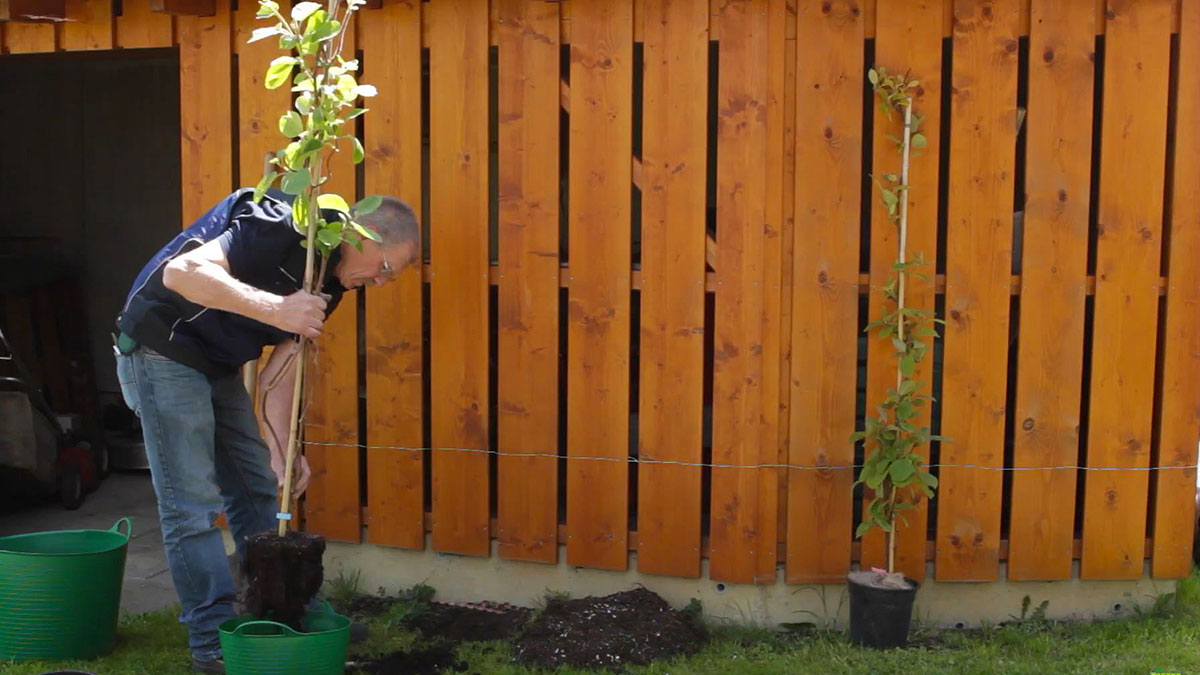
Reproduction
Cuttings propagate kiwi plants. To do this:
- Cut in early summer about 15 centimeters long, at least pencil-thick shoots with already lignified bark and three to four clearly visible eyes.
- Trim all except a few leaves at the tip of the shoot and place the cuttings in pots filled with lean growing soil.
- Lower the containers into the soil in a shady, wind-protected place and cover the surface with a thick layer of straw mulch.
- Once the cuttings have rooted through the pot, plant them in the designated location.
Diseases and pests
Kiwi plants are generally very robust. Occasionally aphids or scale insects occur, more rarely fungal diseases.
FAQ -Kiwi
Where do kiwis grow?
Originally, kiwis come from China, but nowadays, the fruits are mainly imported from New Zealand. In warm and mild winter regions, the plants can also be cultivated here. Kiwis grow best in front of a southwestern or western wall of a house. The soil should be loose, rich in humus and nutrients. Alternatively, kiwis can also be grown in tubs on the terrace or balcony.
When can you plant kiwis?
Young plants from specialist shops can be planted between May and August.
When can you harvest kiwis?
Kiwis are harvested between the end of September and October. By the way: for the climbers to produce fruit, you need both a male and a female plant, because Kiwis are dioecious.
When can you prune kiwis?
Kiwis can only be cut from the third year onwards—the optimum time for pruning is in August. The annual fruit shoots are shortened by about a third. The ends of the leading shoots can also be trimmed a little once a year. More robust pruning measures are generally postponed until late summer.
Image credit: pinterest
